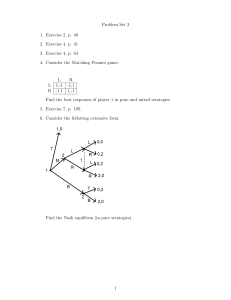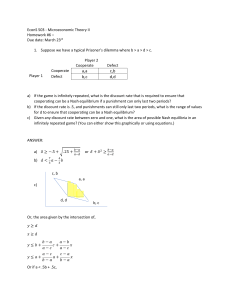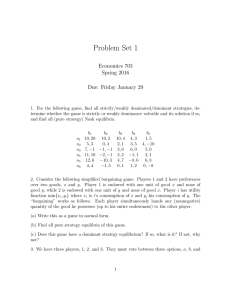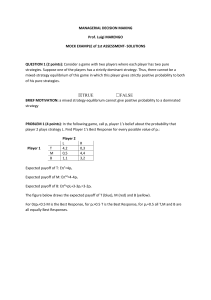Problem Set 9 Solution 1 Gibbons 2.11 (p.135)
advertisement
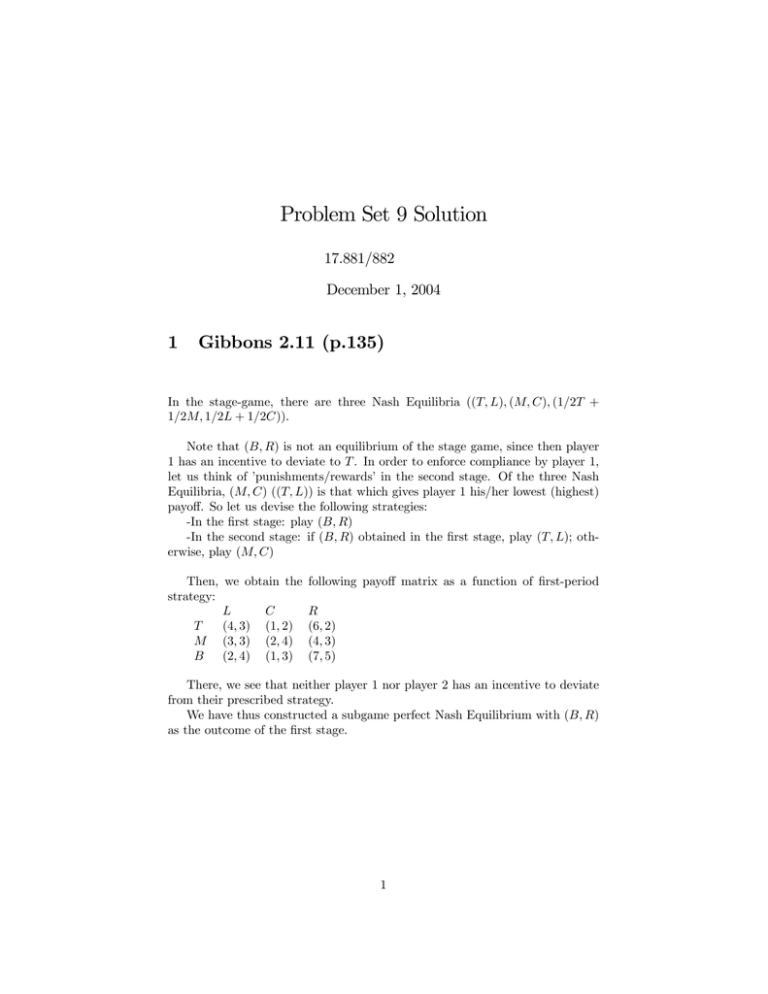
Problem Set 9 Solution 17.881/882 December 1, 2004 1 Gibbons 2.11 (p.135) In the stage-game, there are three Nash Equilibria ((T, L), (M, C), (1/2T + 1/2M, 1/2L + 1/2C)). Note that (B, R) is not an equilibrium of the stage game, since then player 1 has an incentive to deviate to T . In order to enforce compliance by player 1, let us think of ’punishments/rewards’ in the second stage. Of the three Nash Equilibria, (M, C) ((T, L)) is that which gives player 1 his/her lowest (highest) payoff. So let us devise the following strategies: -In the first stage: play (B, R) -In the second stage: if (B, R) obtained in the first stage, play (T, L); otherwise, play (M, C) Then, we obtain the strategy: L C T (4, 3) (1, 2) M (3, 3) (2, 4) B (2, 4) (1, 3) following payoff matrix as a function of first-period R (6, 2) (4, 3) (7, 5) There, we see that neither player 1 nor player 2 has an incentive to deviate from their prescribed strategy. We have thus constructed a subgame perfect Nash Equilibrium with (B, R) as the outcome of the first stage. 1
